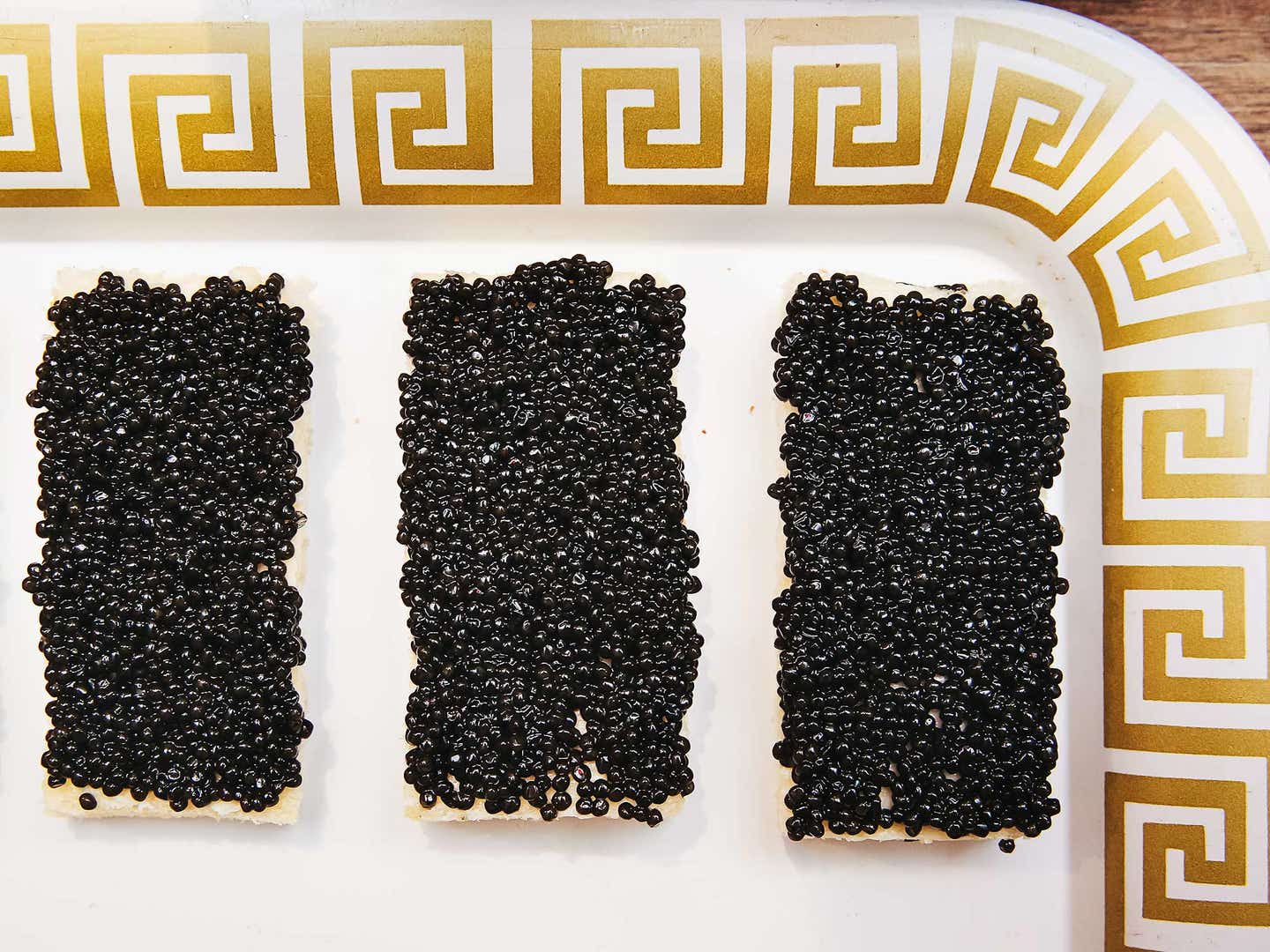
For a Garden Party to Remember, Bring out the Zakuski
Fill the table with mouthwatering Slavic snacks, invite your friends, and let the ice-cold vodka do the rest.
Imagine arriving at a cocktail party and finding a table set with platters of Russian finger food. Caviar gleams on a bed of ice beside a pitcher of daffodils. There are hot blini with butter-filled nooks; little crimped turnovers with sundry savory stuffings; dilly cucumber finger sandwiches; and sweet-and-sour salads in layers of fuschia, orange, and gold. You notice the air smells like buttery pastry and cold-smoked fish as the host nudges a frosty shot glass between your fingers and fills it with homemade lemon vodka; then, a heartfelt toast to health and friendship, ushering in the spring.
If this scene appeals, we suggest making it a reality in your home or backyard: A feast centered on zakuski—Russian small plates (singular: “zakuska”)—is as enjoyable to prepare as it is rewarding to serve. When done right, it’s the type of gathering that will linger in guests’ memories long after the final round of shots.
Now, you’re probably already an armchair expert on tapas and mezes, thanks to the “small plates” craze of the 2010s, but zakuski are a world unto themselves: They revolve around their own set of flavors, reflecting deep-seated traditions and taboos. Yet perhaps due to stereotypes about Russian food that painted it as stodgy and bland, zakuski have never quite had their moment in the American culinary zeitgeist. That’s a shame, not only because of their sheer deliciousness, but also because they often require little more work than twisting open a jar.
But it’s not too late for zakuski—especially if Anya von Bremzen has anything to say about it. Von Bremzen is the Moscow-born author of Mastering the Art of Soviet Cooking and Please to the Table (the current pick for the SAVEUR Cookbook Club) and an encyclopedia on all things zakuski. Here is her blueprint for the perfect zakuski spread.
Smoked, Pickled, Cured
Preserved meats and fish are the bedrock of any zakuski feast, and that’s no coincidence: These snacks were invented to withstand hours at room temperature. In the late 17th century, owners of Russian estates would set out tables of cold hors d’oeuvres ahead of the arrival of their weary—and often ravenous—visitors, who could stream in intermittently due to bad roads and unpredictable weather. But in the ensuing centuries, zakuski became more performative than practical as restaurants and households sought to prove their social status with elaborate, vodka-drenched buffets accompanied by all sorts of fancy snacks.
Today, Russians have no qualms about plating prepared foods straight from the can or vacuum-sealed bag—so you shouldn’t either, especially if you’re pressed for time. Whether you wind up at your local Eastern European grocer or at an online retailer like Russian Food USA, it pays to think like a prepper: Nobody ever complained about a pantry filled with herring, oil-packed sprats, marinated mushrooms, pickled beets, sauerkraut, smoky pork sausages, and caviars of varying hues (e.g., yellow whitefish, red salmon, black osetra).
Beyond the myriad plates, boards, and bowls filled with all of these ferments, von Bremzen also likes to have a “separate pickle station” at her zakuski gatherings.
Boiled, Sliced, Jellied
Russian cooks like to offset the punchy, funky flavors of pickled and fermented foods with subtler cooked meats, boiled shrimp, and kholodets (aspics). At the deli counter, spring for a variety of cold cuts, and grab a couple of different mustards to spoon into little bowls on the side. All those meats fanned out on a bed of—sue us—curly parsley is a nostalgic flex that would make any babushka proud. Or go all-out retro with aspics and offal: von Bremzen suggests sliced tongue with horseradish sauce.
Sandwiched, Blended, Stuffed
Dainty open-faced sandwiches called buterbrodi are a perfect blank canvas for whatever you have in the fridge. Experiment with any combination of cheese, herbs, meats, fish, and crisp vegetables, and stack them on mayo-slicked half-slices of rye or black bread.
Any leftover crusts can be dipped into mock “caviars”—spreadable salads made with boiled beets, eggplant, or whatever other vegetables you have on hand. These are usually enriched with a dollop of mayonnaise and pepped up with lemon juice. (A Georgian variant called pkhali adds ground walnuts and the fenugreek-y spice blend khmeli suneli.) Other stalwart zakuski salads include salat Olivye (potatoes with peas, carrots, and pickles), and vinegret, a tart, red mixture of chopped potatoes, beets, carrots, and pickled vegetables.
Though zakuski are usually a hearty first course before an even heartier main (see: weary travelers), these days many Russians make zakuski into a meal by supplementing cold appetizers with more elaborate, often hot, dishes like turnovers, pirozhki (fried buns), pierogi, and cabbage-stuffed coulibiac.
To Wash It All Down
Zakuski are often so ancillary to the main event—the booze—that in her memoir, Mastering the Art of Soviet Cooking, von Bremzen translates the term not as “little bites,” as other authors have, but as “food chaser.” Historically, zakuski most often chased plain vodka, Armenian brandy, or beer, but von Bremzen recommends eschewing those for more intriguing infusions made with anything from aniseed to buffalo grass to bilberry. The flavoring process is easier than it sounds: To make lemon vodka, von Bremzen’s favorite, add the zest of 1½ lemons to one bottle of the clear spirit, let it infuse for six hours, strain, chill in the freezer, and voilà.
Russians don’t sip their vodka, of course—they toss it back in one gulp. Fear not, you’ve got a bevy of chasers to choose from.
Keep Reading
Continue to Next Story










